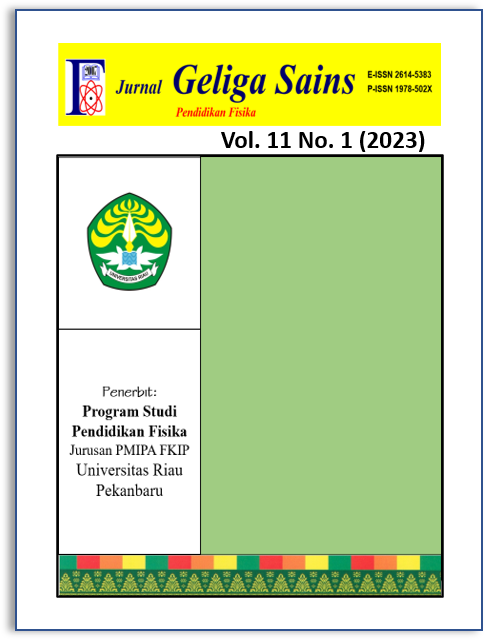Interactive Multimedia Based on Cognitive Conflict to Improve Understanding of Student Concepts in Atomic Nucleus Materials
Keywords:
atomic nucleus, cognitive conflict, interactive multimedia, misconceptions, remediationAbstract
Misconceptions often occur in students because they build their own concepts, which are not in accordance with scientific concepts, including the concept of the atomic nucleus. In schools, there are no IT-based teaching materials that can specifically remediate misconceptions about atomic nuclei and radioactivity. The research was carried out with the aim of making cognitive conflict-based interactive multimedia valid, practical, and effective in small-group evaluations. This research includes design/development research through the use of the Plomp development model, which is limited to 2 stages, namely the preliminary research and the development stage in the small group evaluation. Preliminary research reviewed 3 journals about students' misconceptions about the concept of the atomic nucleus. In the development stage of interactive multimedia design, self-evaluations, expert reviews, one-to-one evaluations, and small-group evaluations were carried out. Data were analyzed descriptively and using the Aiken's-V formula. The results of the self-evaluation of the interactive multimedia design show that it is in the very good category and the average is 83.5. The results of the expert review prove that interactive multimedia design has an average of 0.81 in a very valid category, and has very practical practicality through an average value of 93.1 at the one-to-one evaluation stage and 88.7 at the small stage group evaluation. It can be concluded that the teaching materials in the form of interactive multimedia based on the cognitive conflict in the Atom core material are valid and practical in an effort to support the increase in the conceptual understanding of high school students.




